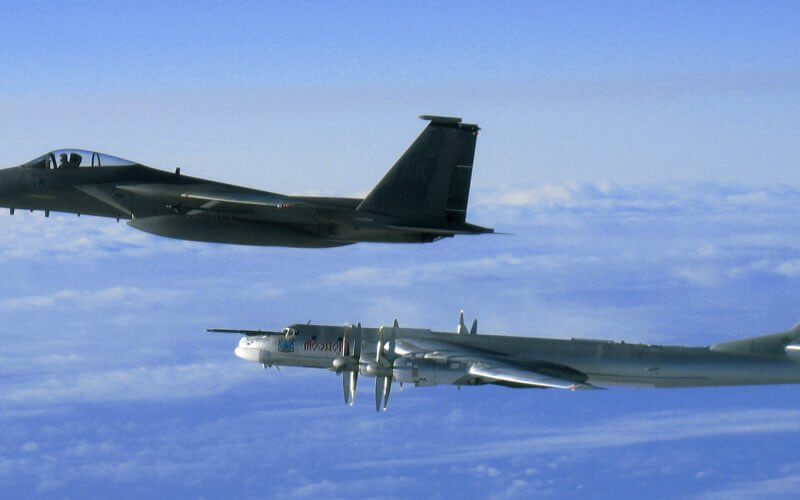By: Jake Smith, Daily Caller News Foundation
The North American Aerospace Defense Command (NORAD) intercepted Russian and Chinese bombers near the U.S. on Wednesday.
NORAD jets intercepted the four Russian TU-95 Bear and Chinese H-6 bombers while they were flying near Alaska over international airspace, the command said in a statement on Wednesday. It is the first time that both Russian and Chinese aircraft have been intercepted while operating in concert with each other, as the two countries continue to work increasingly closer on military cooperation, a U.S. defense official told CNN.
It was also the first time that H-6 bombers have been spotted over the Alaskan Air Defense Identification Zone (ADIZ), the official told CNN.
View from a Russian Air Force Tu-95 in Alaska’s air defense identification zone yesterday, after an intercept by US and Canadian forces.
— OSINTtechnical (@Osinttechnical) July 25, 2024
Flying in formation next to the Russian Bear:
2x USAF F-16 Falcons
1x USAF F-35
2x RCAF CF-18 Hornets pic.twitter.com/5O03GQmd9D
“Alaska continues to be on the frontlines of the authoritarian aggression by the dictators in Russia and China who are increasingly working together. Make no mistake, this is an escalation — the first time Russia and China have sent a joint bomber task force into the Alaska ADIZ,” Republican Alaskan Sen. Dan Sullivan said in a statement on Wednesday. “As I have been warning our Pentagon leaders for years, these kinds of joint Russia and China incursions on the sea and in the air near Alaska will continue.”
The interception was conducted by U.S. F-16 and F-35 jets, alongside Canadian CF-18 jets, the defense official told CNN. NORAD noted in a statement on Wednesday that the incident was “not seen as a threat” but that it would continue to “monitor competitor activity near North America and meet presence with presence.”
Given its prime strategic location, the Arctic has become a potential hotspot for activity between the U.S. and Russia, as well as a maritime causeway connecting East Asia and the European region, according to South China Morning Post. Those marine passages will keep opening up as ice caps continue to melt.
U.S. Northern Command (NORTHCOM) and NORAD Chief Gen. Gregory Guillot told Congress in March that China was pushing further into the region and predicted that aircraft could be spotted there “as soon as this year.”
“What I have seen is a willingness and a desire by the Chinese to act up there,” Guillot told the Senate Armed Services Committee in March. “It is a very big concern of mine.”










